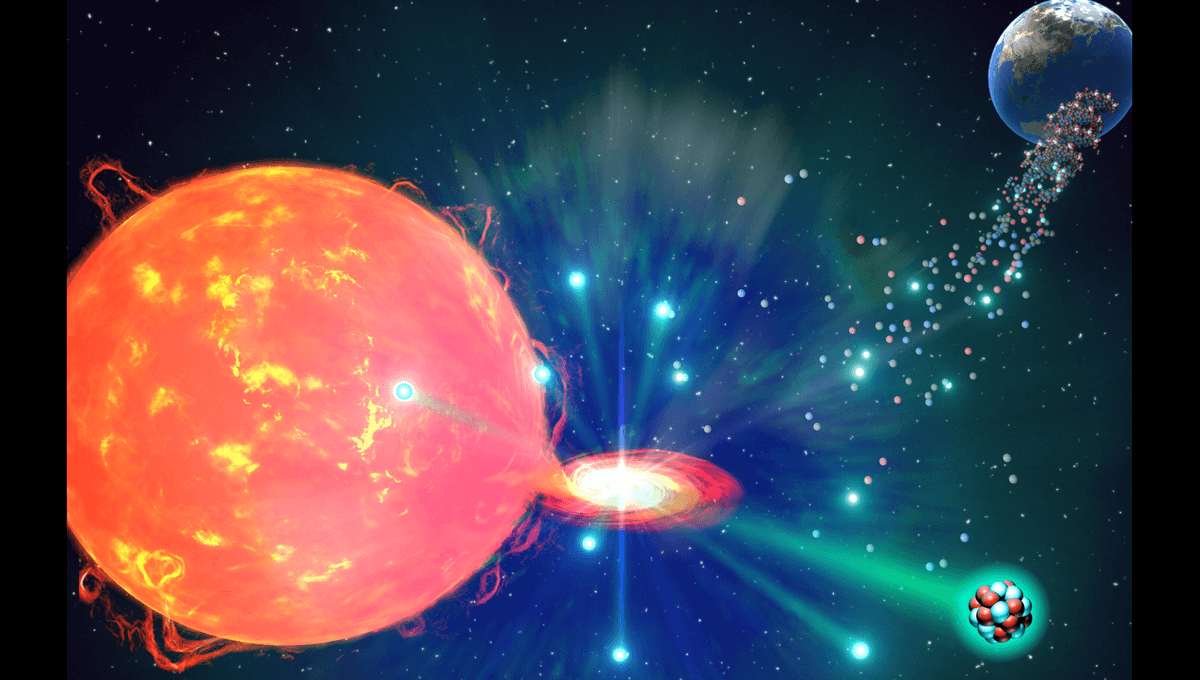
Phosphorus is one of the few elements that may be essential for life, but its origins are something of a mystery. Core-collapse supernovae are known to form some phosphorus, but this source alone can’t explain its abundance and distribution within the galaxy. If novae, rather than supernovae, are the main source of phosphorus then what we see makes more sense, with important implications for the prospects of finding life elsewhere.
Among the components of life, phosphorus is something of an oddity. Other ingredients used by all living things on Earth, such as carbon and hydrogen, are very common, galactically speaking. We expect that whatever limitations there may be on life getting started elsewhere, the lack of these elements would not be among them. Humans need some much rarer elements, such as selenium, but many other life forms don’t, and if Earth had been deficient in these ingredients, evolution might have found another path.
Phosphorus is more abundant in Earth’s crust than carbon, but the same may not be true of the galaxy in general – variation in its concentration between stars is considered something of a puzzle. With a higher atomic number than the other essential elements, it is not formed as readily, sparking a search to identify its origins.
A new study points to oxygen-neon novae. Like all novae, these involve white dwarves in close orbits with another star, usually a red giant. The white dwarf is so dense, and the companion so diffuse, that the smaller star can pull matter off the other to make an accretion disk. As the material in the disk spirals onto the white dwarf, it sometimes accumulates to the point where it becomes hot enough to ignite nuclear fusion, leading to a sudden brightening. The world is eagerly awaiting the sight of the brightest recurrent novae, T Coronae Borealis, which is expected to have such an outburst quite soon.
Novae are sometimes classified by the elements most visible in their spectrum. Oxygen-neon, or oxygen-neon-magnesium novae, also known as ONe novae, have been suspected since the late 1990s of forming phosphorus in abundance by a complex fusion path, where other novae make little or none. With some novae bursting frequently (by galactic standards) over long periods of time, the cumulative phosphorus production can be very large.
ONe novae involve white dwarfs with masses at least 25 percent greater than the Sun. Professor Kenji Bekki of the University of Western Australia told IFLScience that to get a white dwarf like that, the progenitor star needs to start off with 7 to 9 solar masses, something which is relatively rare.
When Bekki and Dr Takuji Tsujimoto of the National Astronomical Observatory of Japan modeled the expected concentrations of phosphorus in stars if much of it was formed in ONe novae, they got a close match with what is observed. A plot of the ratio of phosphorus to iron in stars compared to the ratio of iron to hydrogen produces a strange pattern. Low iron stars also have little phosphorus, but as iron becomes more abundant, phosphorus rises – not just compared to hydrogen, but compared to iron as well. Then at a certain point, the trend reverses, so that the phosphorus becomes scarcer relative to iron.
[Novae have a] wind velocity of 3,000 kilometers a second, much larger than average for the Milky Way.
Professor Kenji Bekki
Iron abundance is an important measure here, because it is used to track how evolved stars are. The first stars were pure hydrogen and helium, but the next generation, formed from their ashes, had more metals, with iron used as the primary measure.
Bekki and Tsujimoto propose the ONe novae were most common in our galaxy around 8 billion years ago, providing a phosphorus boost to stars formed thereafter. As their frequency dropped, phosphorus concentrations stalled. “ONe novae become less common as the metallicity [of the progenitor stars] increases,” Bekki explained. Consequently, they had only a brief heyday relatively early in the galaxy’s evolution, but have left a vital legacy.
Supernova explosions are so powerful the elements they make are dispersed far and wide. Novae are more restrained, but Bekki told IFLScience they have a “wind velocity of 3,000 kilometers a second [6.7 million miles per hour], much larger than average for the Milky Way.” This can push a fair bit of phosphorus into nearby gas clouds that later become stars.
Nevertheless, the question remains how widely the phosphorus is dispersed. It’s possible galactic phosphorus distribution is quite uneven, and many planetary systems may lack the concentration needed for the richness of life we see on Earth. “To answer this question we need more computation,” said Bekki. “We might be quite lucky to have as much phosphorus as we do.”
If Bekki and Tsujimoto are right, ONe novae should produce chlorine along with phosphorus. They suggest looking into chlorine distributions to test their theory.
The study is published in The Astrophysical Journal Letters.
Source Link: Life-Giving Phosphorus May Come From A Rare Type Of Nova